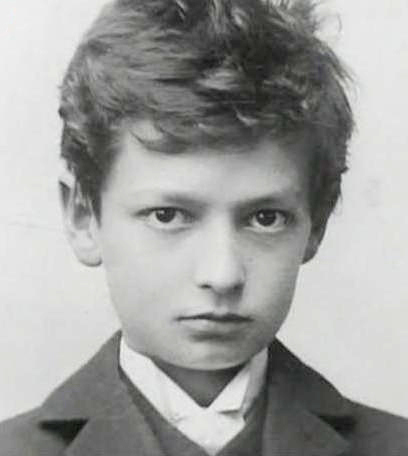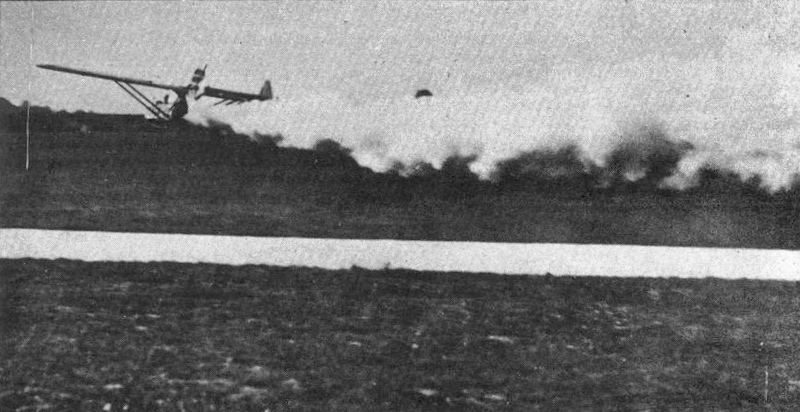|
Esnault-Pelterie
Robert Albert Charles Esnault-Pelterie (8 November 1881 – 6 December 1957) was a French aircraft designer and spaceflight theorist. He is referred to as being one of the founders of modern rocketry and astronautics, along with the Russian Konstantin Tsiolkovsky, the Chinese Qian Xuesen, Germans Hermann Oberth, Fritz von Opel, Wernher Von Braun and the American Robert H. Goddard. Biography He was born on 8 November 1881 in Paris to a textile industrialist. He was educated at the ''Faculté des Sciences'', studying engineering at the University of Paris, Sorbonne. He served in World War I and was made an ''Officier de la Légion d'Honneur''. In November 1928, on board the ''SS Ile de France, Ile de France'' while sailing to New York City, he was married to Carmen Bernaldo de Quirós, the daughter of Don Antonio and Yvonne Cabarrus, and granddaughter of General Marquis of Santiago, Grandee of Spain, Head of the Military Household of Queen Isabella II of Spain, Isabella II. H ... [...More Info...] [...Related Items...] OR: [Wikipedia] [Google] [Baidu] |
Matthew Piers Watt Boulton
Matthew Piers Watt Boulton (22 September 1820 – 30 June 1894), also published under the pseudonym M. P. W. Bolton, was a British classicist, elected member of the UK's Metaphysical Society, an amateur scientist and an inventor, best known for his invention of the aileron, a primary aeronautical flight control device. He patented the aileron in 1868, some 36 years before it was first employed in manned flight by Robert Esnault-Pelterie in 1904. Boulton was the son of Matthew Robinson Boulton, and as well the grandson of Matthew Boulton, who founded the Soho Manufactory and the Soho Mint. His grandfather also co-founded the Soho Foundry with James Watt, which employed steam engines of the latter's design. Born into a family of significant wealth and means, M. P. W. was broadly educated in the classics, philosophy and sciences, subsequently becoming well versed in steam engine design, and then transferring his interest to the basic conceptual designs o ... [...More Info...] [...Related Items...] OR: [Wikipedia] [Google] [Baidu] |
REP 1
The Esnault-Pelterie R.E.P. 1 and the R.E.P. 2 were experimental aircraft built and flown in France in the early twentieth century by Robert Esnault-Pelterie. These aircraft are historically significant because they were the first to employ a joystick as their main flight control. R.E.P. 1 The REP 1 was a single-seat tractor configuration monoplane powered by a seven-cylinder two-row semi-radial engine driving a four-bladed propeller with aluminium blades rivetted to steel tubes. The fuselage was made largely of steel tubing covered in varnished silk and the wings of wood. An elongated triangular fixed horizontal stabiliser was mounted on top of the rear fuselage with a rectangular elevator mounted on the trailing edge, and a fixed fin and rudder were mounted under the fuselage. Lateral control was effected by wing-warping. The main landing gear consisted of a single centrally mounted wheel mounted on a pneumatic damper, with a small tailwheel mounted on the rudder. Lar ... [...More Info...] [...Related Items...] OR: [Wikipedia] [Google] [Baidu] |
Aileron
An aileron (French for "little wing" or "fin") is a hinged flight control surface usually forming part of the trailing edge of each wing of a fixed-wing aircraft. Ailerons are used in pairs to control the aircraft in roll (or movement around the aircraft's longitudinal axis), which normally results in a change in flight path due to the tilting of the lift vector. Movement around this axis is called 'rolling' or 'banking'. Considerable controversy exists over credit for the invention of the aileron. The Wright brothers and Glenn Curtiss fought a years-long legal battle over the Wright patent of 1906, which described a method of wing-warping to achieve lateral control. The brothers prevailed in several court decisions which found that Curtiss's use of ailerons violated the Wright patent. Ultimately, the First World War compelled the U.S. Government to legislate a legal resolution. A much earlier aileron concept was patented in 1868 by British scientist Matthew Piers Wa ... [...More Info...] [...Related Items...] OR: [Wikipedia] [Google] [Baidu] |
Hermann Oberth
Hermann Julius Oberth (; 25 June 1894 – 28 December 1989) was an Austro-Hungarian-born German physicist and engineer. He is considered one of the founding fathers of rocketry and astronautics, along with Robert Esnault-Pelterie, Konstantin Tsiolkovsky, Robert Goddard and Herman Potočnik.During WWII he supported Nazi Germany's '' Aggregat'' rocket program. Early life Oberth was born to a Transylvanian Saxon family in Nagyszeben (Hermannstadt), Austrian-Hungary Empire (today Sibiu in Romania). He was fluent in Romanian language. At the age of 11 years, Oberth's interest in rocketry was set off by the novels of Jules Verne, especially ''From the Earth to the Moon'' and '' Around the Moon''. He was fond of reading them over and over until they were engraved in his memory. As a result, Oberth constructed his first model rocket as a school student at the age of 14. In his youthful experiments, he arrived independently at the concept of the multistage rocket. However, during th ... [...More Info...] [...Related Items...] OR: [Wikipedia] [Google] [Baidu] |
Astronautics
Astronautics (or cosmonautics) is the theory and practice of travel beyond Earth's atmosphere into outer space. Spaceflight is one of its main applications and space science its overarching field. The term ''astronautics'' (originally ''astronautique'' in French) was coined in the 1920s by J.-H. Rosny, president of the Goncourt academy, in analogy with aeronautics. Because there is a degree of technical overlap between the two fields, the term aerospace is often used to describe both at once. In 1930, Robert Esnault-Pelterie published the first book on the new research field. The term ''cosmonautics'' (originally ''cosmonautique'' in French) was introduced in 1930s by Ary Sternfeld with his book ''Initiation à la Cosmonautique'' (Introduction to cosmonautics) (the book brought him the Prix REP-Hirsch, later known as the Prix d'Astronautique, of the French Astronomical Society in 1934.) As with aeronautics, the restrictions of mass, temperatures, and external forces require ... [...More Info...] [...Related Items...] OR: [Wikipedia] [Google] [Baidu] |
Konstantin Tsiolkovsky
Konstantin Eduardovich Tsiolkovsky (russian: Константи́н Эдуа́рдович Циолко́вский , , p=kənstɐnʲˈtʲin ɪdʊˈardəvʲɪtɕ tsɨɐlˈkofskʲɪj , a=Ru-Konstantin Tsiolkovsky.oga; – 19 September 1935) was a Russian and Soviet rocket scientist who pioneered astronautic theory. Along with the Frenchman Robert Esnault-Pelterie, the Germans Hermann Oberth and Fritz von Opel, and the American Robert H. Goddard, he is one of the founding fathers of modern rocketry and astronautics. His works later inspired leading Soviet rocket-engineers Sergei Korolev and Valentin Glushko, who contributed to the success of the Soviet space program. Tsiolkovsky spent most of his life in a log house on the outskirts of Kaluga, about southwest of Moscow. A recluse by nature, his unusual habits made him seem bizarre to his fellow townsfolk. Early life Tsiolkovsky was born in Izhevskoye (now in Spassky District, Ryazan Oblast), in the Russia ... [...More Info...] [...Related Items...] OR: [Wikipedia] [Google] [Baidu] |
Rocket
A rocket (from it, rocchetto, , bobbin/spool) is a vehicle that uses jet propulsion to accelerate without using the surrounding air. A rocket engine produces thrust by reaction to exhaust expelled at high speed. Rocket engines work entirely from propellant carried within the vehicle; therefore a rocket can fly in the vacuum of space. Rockets work more efficiently in a vacuum and incur a loss of thrust due to the opposing pressure of the atmosphere. Multistage rockets are capable of attaining escape velocity from Earth and therefore can achieve unlimited maximum altitude. Compared with airbreathing engines, rockets are lightweight and powerful and capable of generating large accelerations. To control their flight, rockets rely on momentum, airfoils, auxiliary reaction engines, gimballed thrust, momentum wheels, deflection of the exhaust stream, propellant flow, spin, or gravity. Rockets for military and recreational uses date back to at least 13th-century China. ... [...More Info...] [...Related Items...] OR: [Wikipedia] [Google] [Baidu] |
Wernher Von Braun
Wernher Magnus Maximilian Freiherr von Braun ( , ; 23 March 191216 June 1977) was a German and American aerospace engineer and space architect. He was a member of the Nazi Party and Allgemeine SS, as well as the leading figure in the development of rocket technology in Nazi Germany and later a pioneer of rocket and space technology in the United States. As a young man, von Braun worked in Nazi Germany's rocket development program. He helped design and co-developed the V-2 rocket at Peenemünde during World War II. Following the war, he was secretly moved to the United States, along with about 1,600 other German scientists, engineers, and technicians, as part of Operation Paperclip. He worked for the United States Army on an intermediate-range ballistic missile program, and he developed the rockets that launched the United States' first space satellite Explorer 1 in 1958. He worked with Walt Disney on a series of films, which popularized the idea of human space travel in ... [...More Info...] [...Related Items...] OR: [Wikipedia] [Google] [Baidu] |
Robert H
The name Robert is an ancient Germanic given name, from Proto-Germanic "fame" and "bright" (''Hrōþiberhtaz''). Compare Old Dutch ''Robrecht'' and Old High German ''Hrodebert'' (a compound of '' Hruod'' ( non, Hróðr) "fame, glory, honour, praise, renown" and '' berht'' "bright, light, shining"). It is the second most frequently used given name of ancient Germanic origin. It is also in use as a surname. Another commonly used form of the name is Rupert. After becoming widely used in Continental Europe it entered England in its Old French form ''Robert'', where an Old English cognate form (''Hrēodbēorht'', ''Hrodberht'', ''Hrēodbēorð'', ''Hrœdbœrð'', ''Hrœdberð'', ''Hrōðberχtŕ'') had existed before the Norman Conquest. The feminine version is Roberta. The Italian, Portuguese, and Spanish form is Roberto. Robert is also a common name in many Germanic languages, including English, German, Dutch, Norwegian, Swedish, Scots, Danish, and Icelandic. It c ... [...More Info...] [...Related Items...] OR: [Wikipedia] [Google] [Baidu] |


.png)

.jpg)


